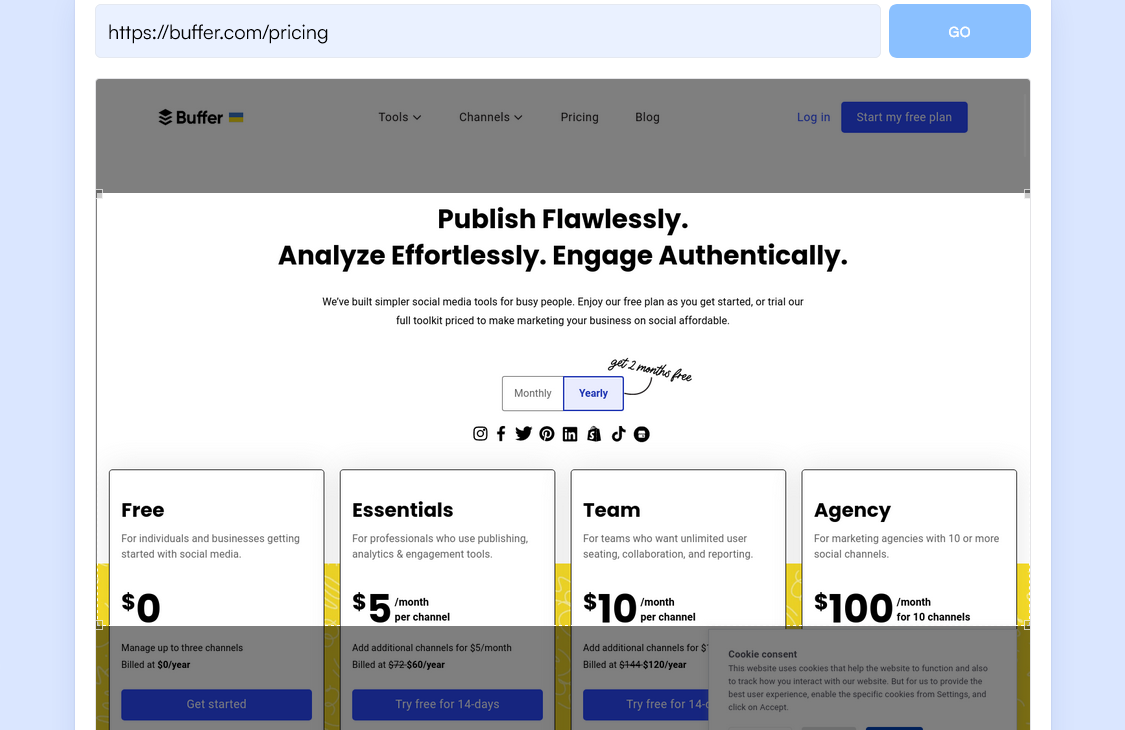8 Ways to Spy on Your Competitors’ Websites
By Emily Fenton
Updated November 24, 2024

8 Ways to Spy on Your Competitors’ Website: Competitive Intelligence Tools & Software
Competitive intelligence is gathered to provide insights into the activities of other companies in with your market. Keeping up with the competition is essential for business success, and when armed with the right information, you’ll be able to improve your branding, products, and services, achieving the edge you need to make your company stand out.
Although you can do quite a bit of competitive intelligence work on your own, manually searching through all of the data available to you is nearly impossible. If you want to quickly and easily get things done, consider Visualping for help spying on your competitors' websites.

Aside from Visualping, though, there are a variety of tools that you can use to keep a close eye on your competition. Here is a selection of tools and methods that can help you spy on competitors’ websites:
Use Visualping to Track Pages on Competitor Websites
For those seeking the most comprehensive solution for gathering competitive intelligence, Visualping can’t be beaten. Instead of tracking multiple websites by checking them manually, Visualping allows you to track every competitor page from a single, easy-to-use interface.
Visualping is an AI-powered website change detection, monitoring, and alert service that allows you to track changes made to any web page, in real-time.
When Visualping detects a change on a page you're tracking, you receive an email alert that includes an AI-generated summary that distills the change in 2-3 lines, so you can understand the update quickly.
It’s perfect for spying on changes to your competitors’ products, services, content, and any other competitor content on the web, such as third-party review sites.
Use Mention to Watch for Mentions of Your Competitors Across the Web
Mention is an online media monitoring tool designed to find any name, phrase, or keyword posted online and send you a notification about its presence. The service is great for keeping up with online conversations about available labels, products, and services, and it provides you with valuable insights into consumer perceptions of both your and your competitors' brands.
Mention can be used to spy on your competitors’ PR movements and earned media placements, making it easier to respond with your own marketing campaigns.
Use Hootsuite to Snoop on Their Organic Social Media Strategy
Hootsuite is includes a basic user interface with comprehensive social media integrations available. You can use Hootsuite to manage your company's social media profiles feeds or use it to consolidate all of your competitors' social media channels as a means of gathering useful competitive intelligence data.
One problem with Hootsuite, however, is that it can prove to be limited if you want to expand your competitive intelligence strategy beyond social media activity, so be sure to use it in conjunction with the other tools in this list.
Use Ahrefs, SEMRush, or Other SEO Software to Get a Picture of Your Competitors’ SEO Strategies
Gathering data associated with your competitors’ SEO strategies is essential if you want to get ahead. There are a variety of popular tools that can help you accomplish that, but Ahrefs and SEMRush are two of the most widely used. Both are SEO software platforms that make it easier for you to find out what your competition is using to optimize its digital marketing strategies.
If you want to know how certain competitor web pages are performing, having an SEO SaaS platform can give you some insights into which keywords they’re targeting and which backlinks they're attracting.
Use SimilarWeb to Get an Idea of Where Your Competitors’ Traffic Is Coming From
SimilarWeb can improve your understanding of different websites and apps by providing an overview of their traffic metrics and information about where that traffic is coming from. Using SimilarWeb will make it easier to benchmark your competitors against one another, and get an instant glimpse into their digital footprint.
SimilarWeb works to ensure all of the information it collects is valid and reliable, and generally the data from SimilarWeb is directionally accurate. However, because Similarweb collects so much data from so many sources, it’s hard to tell if the numbers it gathers in relation to traffic and engagement (especially for smaller websites) are totally accurate.
Use Brand24 for Social Listening to Look for Mentions and Conversations About Your Competitors
Your web marketing strategy can be greatly improved if you have an idea of how your brand is being discussed online. A similar option to Mention (#2 on this list), Brand24 is specifically designed to make it easier for you to find and collect information related to the discussion of brands, products, or services anywhere on the internet, allowing you to see what’s important by filtering posts and threads based on user sentiments, influence, and other important factors.
Knowing how well a company is received and how many people are talking about it can give you an idea of how influential their digital marketing campaigns are. However, it can be difficult to filter out potential spam, making it harder to find and act upon valid competitive intelligence data.
Use AdBeat to Spy on Your Competitors’ Ads
Digital advertising is one of the most crucial elements of an online marketing campaign. Communicating your products and services gives potential customers the information they need to decide whether they’re interested in making a purchase.
By using AdBeat, you’ll be able to get all kinds of useful information about your competitors’ ads. Simply by providing a company’s homepage, AdBeat can tell you where they advertise, whether they’re using automation to do so, and where their ads are placed. All of this information can be useful when coming up with strategies of your own.
Use MailCharts to Find Out More About Your Competitors’ Email Marketing Campaigns
Email marketing campaigns are a great way for businesses to reach out to individual customers with personalized messages and deals, but it can be difficult to keep up with the campaigns of multiple competitors simply by subscribing to their newsletter.
MailCharts was designed to make it easier to spy on your competitors' email marketing by aggregating data from each of your competitors and visualizing the most important information. With the service, you can use marketing emails to source vast amounts of information, such as when and how often messages were sent, along with their length and other valuable details.
The biggest drawback to MailCharts is that it focuses exclusively on mail campaigns, so if you want other types of information, you’ll have to look elsewhere.
Competitive Intelligence Is Transforming Marketing
Digital marketing is more competitive than it’s ever been, making it a necessity to have the latest insights into your competition and their strategies in order to reach new customers.
Whether you want to spy on your competitors' product listings, likes and mentions, seo changes, or email outreach, there are a variety of tools that you can use to get the job done. However, none offer as much as Visualping does for free.
Visualping is a AI website change monitoring tool that will help you spy on your competitors. Trusted by more Fortune 500 companies than any other website tracking tool, Visualping makes it easy for you to get the most recent website update notifications sent straight to your inbox. Contact us to learn more.
Visualping: competitor monitoring made simple
Get targeted updates from the competition on autopilot. Trusted by 85% of Fortune 500 companies.
Emily Fenton
Emily is the Product Marketing Manager at Visualping. She has a degree in English Literature and a Masters in Management. When she’s not researching and writing about all things Visualping, she loves exploring new restaurants, playing guitar and petting her cats.
